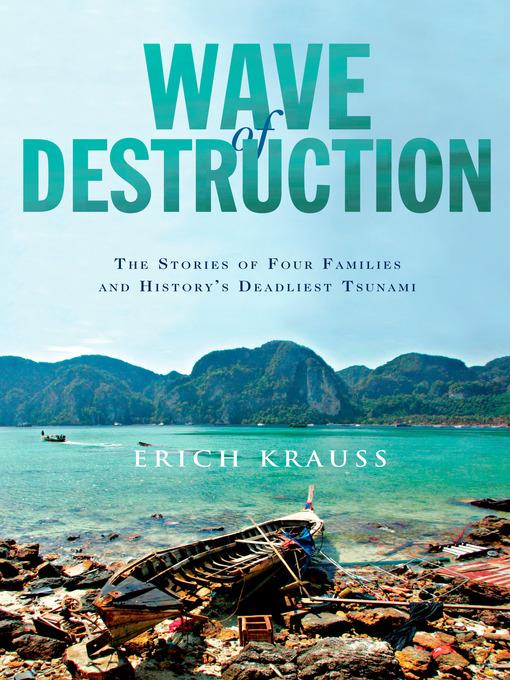
Wave of Destruction
The Stories of Four Families and History's Deadliest Tsunami
کتاب های مرتبط
- اطلاعات
- نقد و بررسی
- دیدگاه کاربران
نقد و بررسی

October 17, 2005
Kraus (Wall of Flame
) provides a compelling account of four families in a Thai village devastated by the tsunami of December 26, 2004. The author first describes the harsh everyday existence of these villagers before the tsunami: a life of poverty in which children are sent off to work for abusive bosses, of earning a hazardous living by diving for tin or stealing lobsters from Burmese traps. The villagers Krauss describes are courageous: one woman, Dang, became an activist, fighting the powerful tin-mining company trying to force her from the land. Puek, blinded in an accident, rallied to help his wife, Lek, after the death of their young son. Krauss then details the tragic tsunami and its aftermath. Trying unsuccessfully to save a baby as wave after wave comes over her, one woman knows "she would never sleep another night." A thug hired by the mining company keeps Dang from returning home to seek her family. Even the aid efforts, these survivors report, are not always blameless: Christian relief workers tell the Buddhist Wichien he must convert to Christianity to get their help, and vacationing foreigners are treated before more critically injured Thais. Passionately told, this tragic story portrays the full human cost of natural devastation. Maps not seen by PW
. Agents, Frank Scatoni and Greg Dinkin.

November 15, 2005
Krauss ("On the Line: Inside the U.S. Border Patrol") became involved with tsunami relief efforts while traveling in Thailand when the last wave struck Southeast Asia. He met and interviewed four families around the village of Nam Khem, who had miraculously survived the deadly surge, but with great losses. The first section of the book, somewhat over-extended, deals with the individuals' stories and situations before the tsunami, setting the stage for the account of their riveting survival. Krauss's narrative goes into high gear with the survivors' experiences during the tsunami and the eyewitness accounts of the destruction and aftermath in the fishing villages along the Thai coast. But even more important, this book takes its perspective from the hard-working, ordinary Thais themselves, rather than the Westerners vacationing there. Its authentic, journalistic tone successfully conveys the mixed culture of the area where Buddhist temples coexist with cell phone technology. Highly recommended for public libraries." -Elizabeth Morris, Illinois Fire Svc. Inst. Lib., Champaign"
Copyright 2005 Library Journal, LLC Used with permission.

December 1, 2005
Krauss, a specialist in natural disasters and author of " Wall of Flame," an account of the 2003 California wildfires, tells the heartrending story of the December 2004 tsunami from the perspective of four families. The approach brings a human scale to a gigantic tragedy, the deadliest tsunami in history. Krauss was among the relief workers who came to the Thai village of Nam Khem after the tsunami struck. In part 1 of the book, Krauss details the history of the village and the four families, who were struggling to survive on rice farms or in tin mines, coping with local political turmoil, facing the challenges of making a living in a developing nation, and weathering hurricanes and the occasional tsunami. In part 2, he details the fateful day as families engaged in their normal routines suddenly faced enormous waves, which washed away all that they have ever known. The latter parts of the book chronicle the search for the missing as families try to reconstitute themselves and rebuild their lives.(Reprinted with permission of Booklist, copyright 2005, American Library Association.)

























دیدگاه کاربران